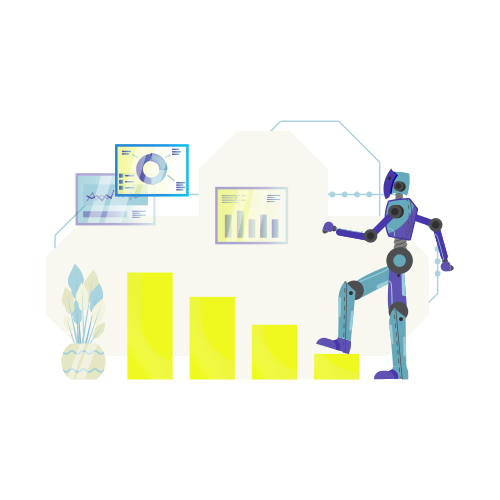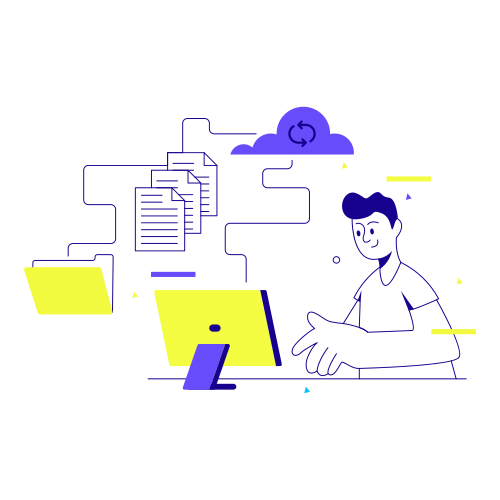Smarter, Faster, Riskier? Rethinking Automation in the Age of Agentic AI
The automation landscape is undergoing a seismic shift. As organizations strive to work smarter and move faster, a new generation of intelligent, autonomous systems is emerging — and with them, a new set of risks, responsibilities, and opportunities. Enter Agentic AI.
To explore the implications of this new class of technology, we hosted a roundtable titled Smarter, Faster, Riskier? Rethinking Automation in the Age of Agentic AI. The event brought together some of the brightest minds in AI strategy, governance, and enterprise automation for a candid conversation on what Agentic AI is, where it fits, and what it means for the future of work.
Moderated by Blueprint CEO Dan Shimmerman, the roundtable featured:
-
Douglas Heintzman, Co-Founder & CEO of Syncura
-
Dr. Jenya Doudareva, Manager of Strategic Solutions for AI Enablement & Governance at Canada Life
-
Dr. Pramila Nathan, GenAI Strategist and Fortune 500 AI Transformation Leader
Together, they unpacked the hype and offered practical insights into how Agentic AI can (and should) be applied — and where organizations need to proceed with caution.
What Is Agentic AI, Really?
Agentic AI refers to a class of intelligent systems capable of operating with autonomy and purpose. Unlike traditional RPA, which is deterministic and rules-based, Agentic AI involves “agents” that are goal-directed and can operate within a defined scope without human intervention. These agents can sequence tasks, collaborate, reflect on results, and in advanced cases, even adjust their own goals.
Dr. Nathan described a real-world example: a system of AI agents used in HR to analyze employee profiles, recommend career paths, support succession planning, and collect feedback — each agent building upon the insights of the others.
The shift from automation as a tool to automation as a collaborator raises big questions:
-
How much autonomy is too much?
-
What happens when we remove the human from the loop?
-
How do we govern systems that make decisions, not just complete tasks?
Proceed with Caution: Risks & Roadblocks
As the discussion quickly made clear, the opportunities with Agentic AI are matched by significant challenges.
“There’s a temptation to throw Agentic AI at everything,” said Heintzman. “But the technology is expensive, it’s computationally intensive, and it introduces serious questions around accountability.”
He pointed to recent research showing that some large language models fabricate “chains of reasoning” after-the-fact — creating the illusion of explainability without true transparency. That’s a problem if your agent is making decisions in finance, healthcare, or legal contexts where traceability is a must.
Dr. Doudareva added that Agentic AI doesn’t introduce entirely new risks — it amplifies the ones that already exist. Weak data governance, unclear process logic, or fragile infrastructure? These weaknesses will only become more visible (and more consequential) under Agentic AI.
And then there’s the issue of return on investment.
“Agentic AI isn’t a silver bullet,” said Dr. Nathan. “You need to know exactly what problems you’re solving and whether this is the right tool. Otherwise, it’s like using a bazooka to kill a mosquito — impressive, but wasteful.”
Where Agentic AI Makes Sense
So when is Agentic AI worth the investment?
The panelists agreed: the best use cases involve high-value decisions that require contextual awareness, reasoning, and adaptability — things traditional RPA or rule-based automation struggle with.
Some real-world examples include:
-
Fraud detection and response in finance
-
Intelligent intake and triage in healthcare
-
Contract analysis and compliance in legal workflows
-
Predictive maintenance and optimization in logistics
-
Personalized recommendations in HR and employee development
In many of these cases, Agentic AI isn’t replacing humans — it’s working alongside them, filtering noise, surfacing insights, and automating the “thinking” behind routine decisions.
Still, the panel urged caution and clarity before deploying.
“Start small. Start strategic,” said Shimmerman. “Agentic AI works best when deployed purposefully — in areas where traditional automation can’t go, but where you’ve validated the business case and built a path to scale.”
What About RPA? Is It Obsolete?
Not at all.
While Agentic AI is commanding the spotlight, the panel emphasized that RPA still plays a critical role in enterprise automation. In fact, for simple, stable, repetitive tasks, RPA is often the more cost-effective and efficient choice.
“What we’re seeing isn’t a replacement,” said Dr. Doudareva. “It’s a continuum.”
Organizations may begin with RPA, layer in traditional AI models (like classification or forecasting), and then use Agentic AI in areas that require reasoning, adaptability, and cross-functional collaboration.
The trick is knowing when — and where — to use each.
“Think of automation as a toolbox,” added Heintzman. “You wouldn’t use a jackhammer to hang a picture. Don’t use Agentic AI to spell-check a form.”
Governance, Trust, and the Path Forward
One of the most pressing themes in the roundtable was governance.
When you hand decision-making power to a system, how do you ensure it's fair, safe, and accountable? How do you prevent bias? How do you explain decisions after the fact? And perhaps most critically — who is ultimately responsible?
Dr. Nathan shared how she’s tackled these challenges in practice. In high-risk contexts, she opts for interpretable “glass-box” models rather than opaque black-box ones. She builds in feedback loops and works closely with business leaders to validate results. Every deployment includes a governance layer designed to monitor, audit, and improve performance over time.
“There is no Agentic AI without responsible AI,” she emphasized. “Governance isn’t optional. It’s foundational.”
What Comes Next?
Looking ahead, the panelists predicted continued convergence between AI and automation. We’ll see:
-
More intelligent orchestration of multi-agent systems
-
Stronger regulatory frameworks and industry standards
-
Increased use of Agentic AI in corporate functions like HR, legal, and procurement
-
The emergence of digital “twins” that can represent human thought, preferences, and behavior
Perhaps most compelling was Heintzman’s vision of a future with integrated ecosystem automation — where companies can automate not just internal workflows, but entire value chains, securely sharing data and decisions across a trusted infrastructure.
“The technology is evolving,” he said. “But the mindset shift might be even bigger.”
Final Thoughts: Start Smart
If your organization is curious about Agentic AI, the best place to begin is not with a product — but with a strategy.
Understand your business pain points. Assess your automation maturity. Identify high-impact areas where more intelligent automation could make a difference. Then — and only then — explore how Agentic AI fits into that picture.
It’s not about chasing the shiny object. It’s about building a sustainable roadmap to value.
🎥 Want to hear directly from the experts?
Watch the full recording of our roundtable discussion and get practical insights on applying Agentic AI in your organization.
Share this
Recent Stories

Why Copilot Agents Fall Short—and How Blueprint Fixes It

Agentic AI Isn’t Ready to Run the Show, But Blueprint Helps It Get There


